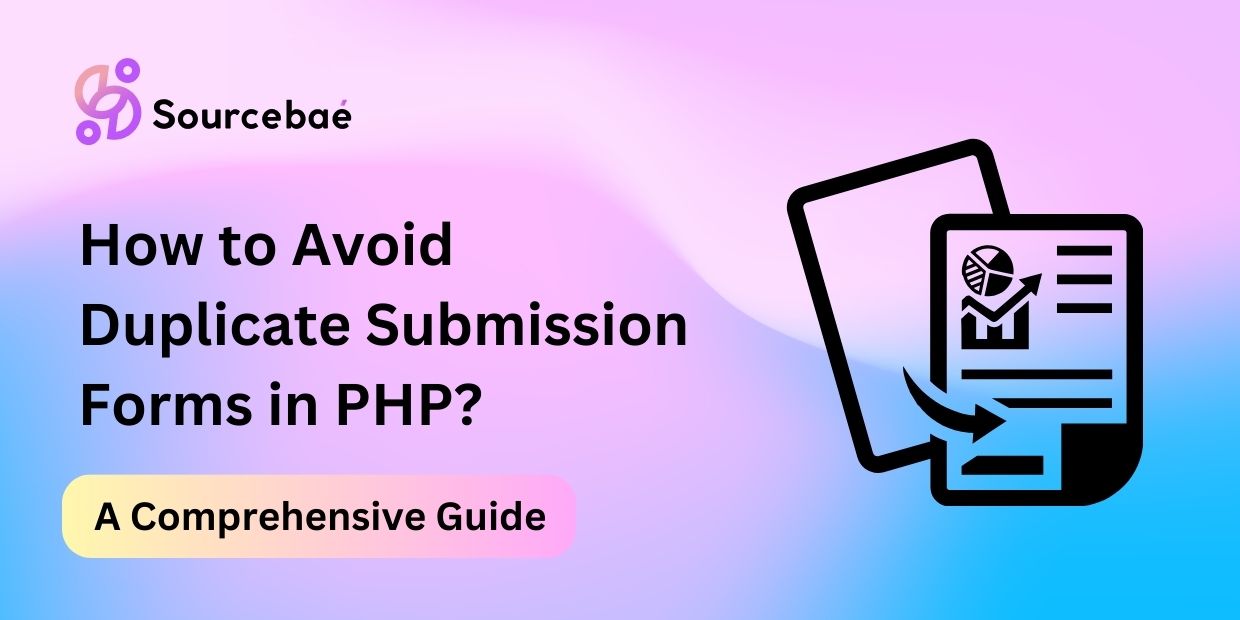When it comes to web development using PHP, handling form submissions is a common task. However, one issue that developers often encounter is duplicate form submissions, which can lead to problems such as double bookings, unintended data manipulation, and other undesirable consequences. In this comprehensive guide, we will delve into various strategies and techniques to ensure your PHP forms Avoid Duplicate Submission seamlessly.
1. Understanding the Problem
What Are Duplicate Submission Forms?
Duplicate submission forms occur when a user inadvertently or intentionally submits the same data multiple times through a web form. This can be caused by various factors, including browser issues, user behavior, or server-related problems.
The Impact of Duplicate Submissions
Duplicate submissions can have severe consequences, such as multiple orders, account errors, and database inconsistencies. It’s crucial to address this issue to maintain data integrity and user satisfaction.
2. Using Tokens to Prevent Duplicates
Introduction to CSRF Tokens
Cross-Site Request Forgery (CSRF) tokens are a common method to prevent duplicate form submissions. These tokens are unique for each user session and form submission.
Implementing CSRF Tokens
To implement CSRF tokens, you need to generate a unique token for each form and verify it upon submission. This ensures that only legitimate form submissions are processed.
3. Disabling the Submit Button
JavaScript Validation
Using JavaScript, you can disable the submit button immediately after it is clicked. This prevents users from submitting the form multiple times before it is processed.
4. Redirect After Submission
PRG Pattern
The Post-Redirect-Get (PRG) pattern involves redirecting users to a different page after a successful form submission. This eliminates the possibility of resubmitting the form by refreshing the page.
5. Server-Side Checks
Database Record Checks
Perform server-side checks by verifying whether the submitted data already exists in the database. If it does, display an error message to the user.
6. Utilizing Session Variables
Tracking Submissions
Use session variables to track form submissions. You can set a session variable upon successful submission and check it before processing subsequent submissions.
7. CAPTCHA Verification
Human Verification
Implementing CAPTCHA verification can prevent automated bots from submitting forms repeatedly. Users must complete a CAPTCHA challenge to submit the form.
8. Throttle Form Submissions
Rate Limiting
Set limits on how frequently a user can submit a form within a specific time frame. This prevents users from overloading your server with submissions.
9. Using AJAX for Submission
Asynchronous Submission
With AJAX, you can submit form data asynchronously, providing real-time feedback to users without requiring page reloads. This reduces the chance of accidental duplicate submissions.
10. Handling Errors Gracefully
User-Friendly Error Messages
When a duplicate submission is detected, provide clear and user-friendly error messages that guide users on what went wrong and how to proceed.
FAQs
How do I check for duplicate submissions in PHP forms?
To check for duplicate submissions in PHP forms, you can implement techniques such as CSRF tokens, disabling the submit button with JavaScript, redirecting after submission (PRG pattern), and server-side checks like database record verification.
Is CAPTCHA necessary to prevent duplicate form submissions?
While CAPTCHA is not the only method, it is an effective way to prevent automated bots from submitting forms repeatedly. It adds an extra layer of security to your forms.
Can I use a combination of methods to prevent duplicate submissions?
Yes, it’s often recommended to use multiple methods in combination for robust duplicate submission prevention. For example, you can combine CSRF tokens with CAPTCHA verification for enhanced security.
Are there any downsides to throttling form submissions?
Throttling form submissions can inconvenience users who genuinely need to submit multiple forms quickly. Therefore, it’s essential to strike a balance between security and user experience.
How can I implement AJAX for form submission?
You can implement AJAX for form submission by using JavaScript libraries like jQuery or native JavaScript functions. AJAX allows you to send form data to the server without refreshing the entire page.
What should I do if a duplicate submission still occurs?
If a duplicate submission occurs despite your prevention efforts, consider logging and analyzing the issue to identify its root cause. It may be related to specific user behavior or server-side problems.
Conclusion
Preventing duplicate submission forms in PHP is crucial for maintaining data accuracy and user satisfaction. By implementing a combination of techniques such as CSRF tokens, JavaScript validation, PRG pattern, and server-side checks, you can ensure that your PHP forms work seamlessly, providing a smooth user experience while safeguarding your data against unwanted duplication.
READ MORE: What’s the Current and Future Scope of SAP?






